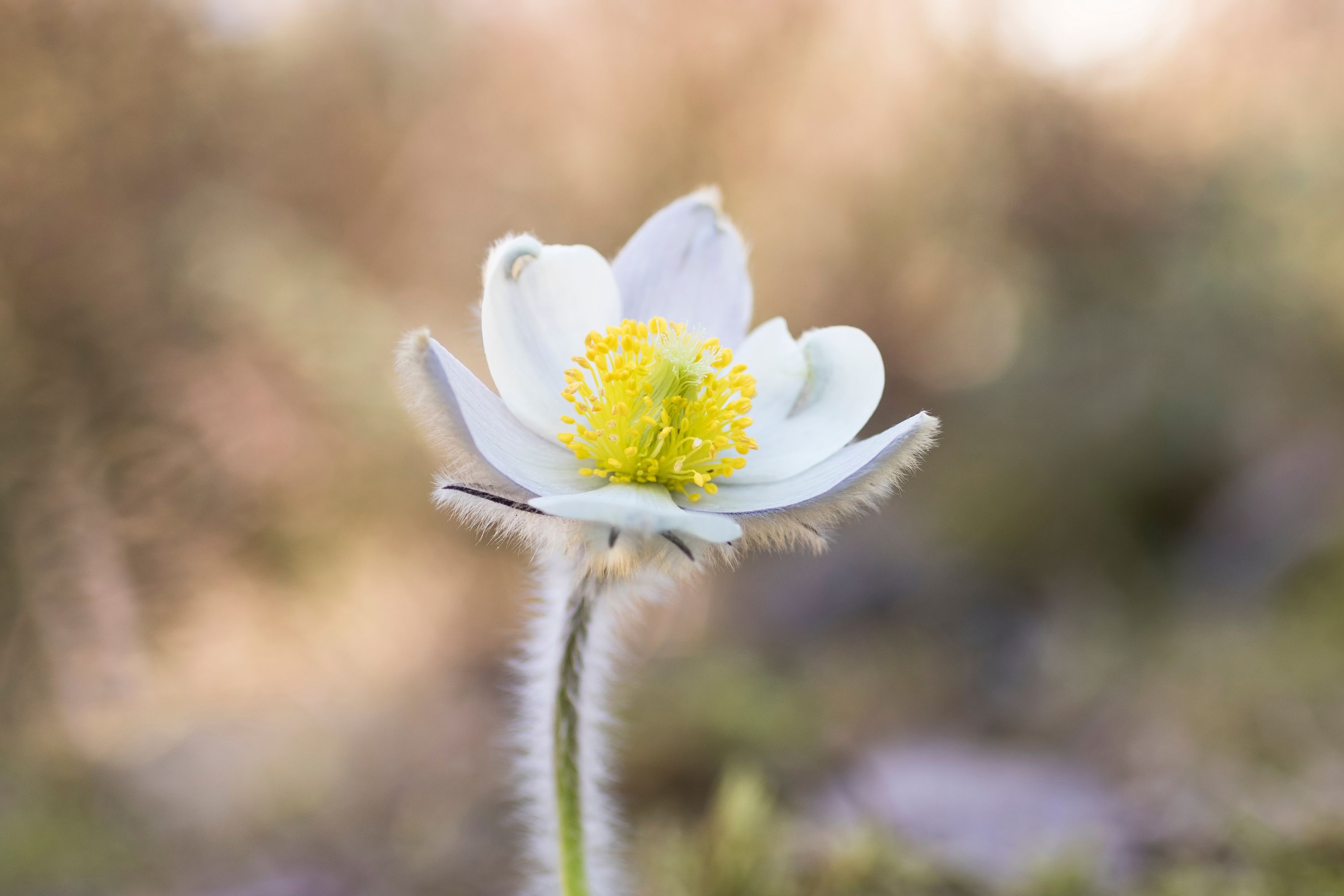Spring pasqueflower
(Pulsatilla vernalis)

Description
Pulsatilla vernalis (spring pasqueflower, arctic violet, lady of the snows) is a species of flowering plant in the family Ranunculaceae, native to mountainous habitats in Europe. Growing to 10 cm (4 in) high and wide, it is a semi-evergreen perennial with hairy, divided leaves. In early spring it bears anemone-like flowers which are up to 6 cm (2 in) in diameter, white flushed with violet on the outer surface of the petals, and prominent yellow stamens. The specific epithet vernalis means "of spring". In cultivation it is suitable for an alpine garden or alpine house, with sharply drained soil in full sun. Though very hardy it dislikes winter wetness. It has gained the Royal Horticultural Society's Award of Garden Merit. It is the county flower of Oppland, Norway and is depicted in the county coat of arms. It is also the county flower of Härjedalen, Sweden and South Karelia, Finland. The genus Pulsatilla contains about 40 species of herbaceous perennial plants native to meadows and prairies of North America, Europe, and Asia. Derived from the Hebrew word for Passover, "pasakh", the common name pasque flower refers to the Easter (Passover) flowering period, in the spring. Common names include pasque flower (or pasqueflower), wind flower, prairie crocus, Easter flower, and meadow anemone. Several species are valued ornamentals because of their finely-dissected leaves, solitary bell-shaped flowers, and plumed seed heads. The showy part of the flower consists of sepals, not petals. The genus Pulsatilla was first formally named in 1754 by the English botanist Philip Miller. The type species is Pulsatilla vulgaris, the European pasque flower. It is sometimes considered a subgenus under the genus Anemone or as an informally named "group" within Anemone subg. Anemone sect. Pulsatilloides. Pulsatilla is a toxic plant. Misuse can lead to diarrhea, vomiting and convulsions, hypotension, and coma. It has been used as a medicine by Native Americans for centuries. Blackfoot Indians used it to induce abortions and childbirth. Pulsatilla should not be taken during pregnancy nor during lactation. Extracts of Pulsatilla have been used to treat reproductive problems such as premenstrual syndrome and epididymitis. Additional applications of plant extracts include uses as a sedative and for treating coughs. It is also used in the field of homeopathy.
Taxonomic tree:







